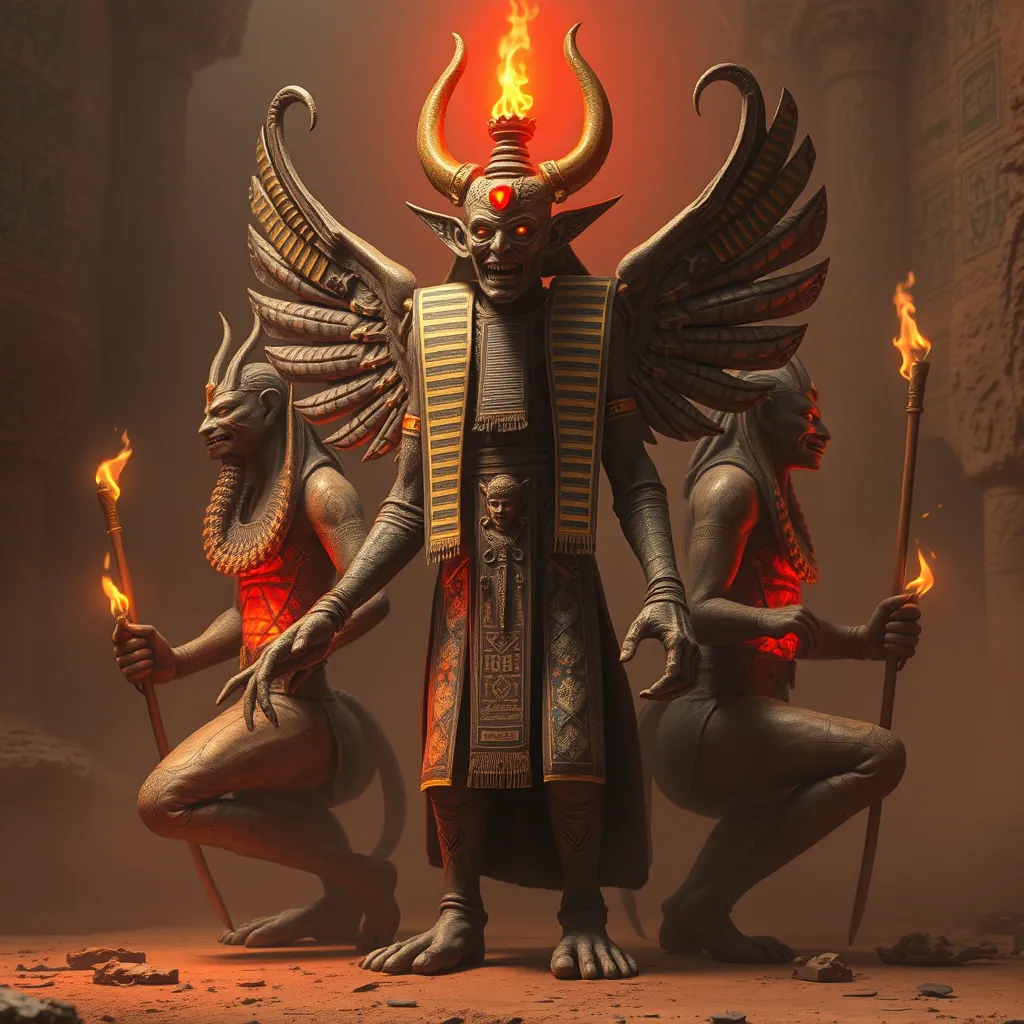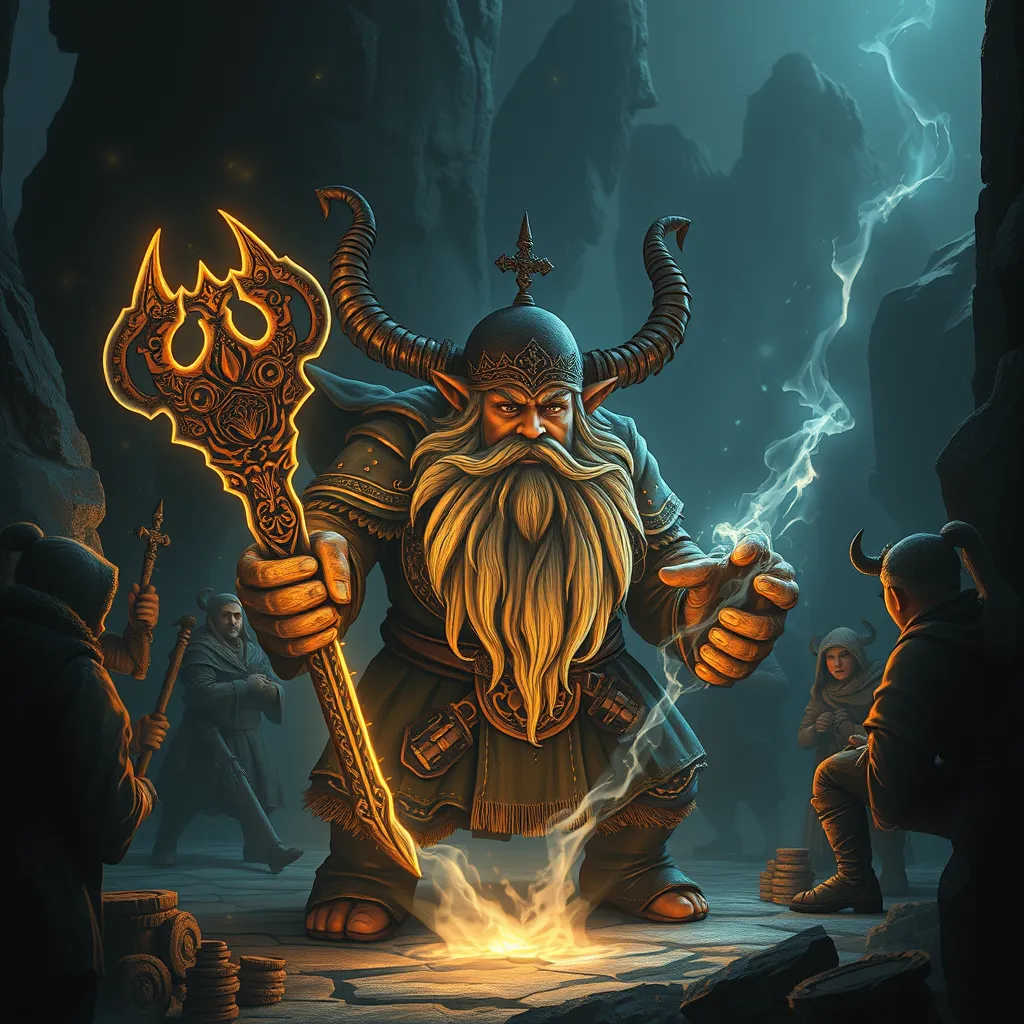The Rakshasa in Ancient Egyptian Religion: The Entities of the Afterlife
I. Introduction
The term Rakshasa refers to a class of supernatural beings in Hindu mythology, often depicted as malevolent spirits or demons. They are known for their ability to shape-shift and are associated with chaos and moral dilemmas. In contrast, Ancient Egyptian religion is rich with beliefs centered on the afterlife, where deities play crucial roles in guiding and judging souls. This article aims to explore the intriguing role of Rakshasa in the context of Egyptian afterlife entities, examining potential connections and cultural intersections.
II. Historical Context of Egyptian Religion
Ancient Egyptian beliefs about death and the afterlife were deeply ingrained in their culture, reflecting a society that placed significant importance on the journey after death. Egyptians believed that the soul would face various challenges and judgments to attain a peaceful afterlife.
A. Overview of Ancient Egyptian beliefs about death and the afterlife
Egyptians viewed death not as an end, but as a transition to another existence. They believed in a complex afterlife journey that included:
- The journey through the Duat (the underworld).
- Encounters with various deities and challenges.
- The ultimate judgment in the Hall of Ma’at.
B. Key deities associated with the afterlife
Several deities were integral to the Egyptian afterlife belief system:
- Osiris: God of the afterlife and resurrection.
- Anubis: God of mummification and the protector of graves.
- Ma’at: Goddess of truth and justice, representing order and balance.
C. Cultural interplay between Egyptian and other ancient religions, including Indian traditions
Throughout history, there were cultural exchanges between ancient civilizations. While the direct interactions between Egyptian and Indian cultures are limited, trade and migration could have facilitated the exchange of ideas, including religious beliefs.
III. Understanding Rakshasa in Hindu Mythology
In Hindu mythology, Rakshasas are often portrayed as fierce and powerful beings, embodying chaos and moral ambiguity.
A. Origins and characteristics of Rakshasa in Hindu texts
Rakshasas are described in various Hindu scriptures, including the Vedas and the epics like the Ramayana. They are characterized by:
- Ability to shape-shift.
- Association with darkness and night.
- Often acting as antagonists to heroes and deities.
B. Role of Rakshasa in the concept of morality and chaos
Rakshasas challenge the moral order, often representing the darker aspects of human nature. Their existence raises questions about good and evil, testing the virtues of heroes in mythological narratives.
C. Comparison of Rakshasa with similar entities in other cultures
Similar entities can be found in various cultures, such as:
- Demons in Judeo-Christian traditions: Often representing temptation and sin.
- Yōkai in Japanese folklore: Supernatural beings that can be both malevolent and benevolent.
IV. The Intersection of Rakshasa and Egyptian Afterlife Beliefs
While direct historical interactions between the Egyptian and Indian cultures may be sparse, there are intriguing theoretical connections.
A. Analysis of any historical interactions between Egyptian and Indian cultures
Scholars have explored trade routes and cultural exchanges, suggesting that ideas about afterlife and deities could have traveled between these regions.
B. Theoretical connections between the Rakshasa and Egyptian afterlife entities
Both Rakshasas and Egyptian afterlife entities embody dualities of chaos and order. Rakshasas, with their ability to disrupt harmony, can be seen as counterparts to entities that challenge the soul’s passage in the Egyptian afterlife.
C. Symbolic representations of chaos and order in both traditions
In both mythologies, chaos often precedes order. The struggle against Rakshasas in Hinduism mirrors the trials faced by souls in the Egyptian afterlife, emphasizing the eternal battle between good and evil.
V. The Role of Soul and Judgment in Egyptian Afterlife
Judgment plays a central role in Egyptian beliefs regarding the afterlife, with the soul undergoing rigorous tests to determine its fate.
A. The Weighing of the Heart ceremony
In this ceremony, the heart of the deceased is weighed against the feather of Ma’at. A heart lighter than the feather signifies a life of virtue, while a heavier heart indicates wrongdoing.
B. Comparison with the moral dilemmas posed by Rakshasa in Hindu beliefs
Just as Rakshasas challenge heroes and provoke moral dilemmas, the Egyptian judgment reflects the consequences of one’s choices in life, showcasing a similar theme of accountability.
C. Implications of judgment and punishment in both mythologies
Both traditions emphasize the importance of one’s actions in life, leading to either reward or punishment in the afterlife, thus reinforcing moral values within their respective cultures.
VI. Rituals and Practices Related to the Afterlife
The rituals surrounding death and the afterlife are crucial in both Egyptian and Hindu traditions, reflecting their beliefs about existence beyond this life.
A. Egyptian funerary practices and their significance
Egyptians engaged in elaborate funerary practices, including mummification and burial rituals, to ensure a safe passage to the afterlife.
B. Hypothetical incorporation of Rakshasa in Egyptian rituals
If Rakshasas were to be integrated into Egyptian afterlife rituals, they might serve as symbols of chaos that the deceased must confront, similar to other challenges faced during the afterlife journey.
C. Cross-cultural comparisons of afterlife rituals
Both cultures emphasize the significance of rituals, although the specific practices differ. Understanding these similarities can provide insights into the human desire to comprehend mortality.
VII. Contemporary Perspectives and Interpretations
In modern times, the understanding of Rakshasa and Egyptian afterlife beliefs has evolved, influenced by globalization and academic discourse.
A. Modern interpretations of Rakshasa within the context of Egyptian mythology
Some contemporary scholars have begun to draw parallels between these mythological figures, emphasizing the universal themes of chaos and order in religious narratives.
B. Influence of globalization on the perception of ancient religions
Globalization has led to a greater appreciation and understanding of diverse cultures, allowing for comparative studies that highlight similarities and differences across traditions.
C. The role of academic discourse in understanding these entities
Scholarly research continues to explore the complexities of these mythologies, encouraging cross-cultural dialogue that enhances our understanding of ancient beliefs.
VIII. Conclusion
In summary, the exploration of Rakshasa within the context of Ancient Egyptian religion reveals intriguing connections between chaos, morality, and the afterlife. Both traditions emphasize the importance of judgment and the consequences of one’s actions, highlighting the universal themes that transcend cultural boundaries.
Studying cross-cultural mythologies not only enriches our understanding of individual traditions but also reveals the shared human experience in grappling with mortality and the afterlife. Future research could further investigate the intersections of these mythologies, offering deeper insights into the entities that shape our understanding of life beyond death.




